INTERNACIONAL
Scoop: Democrats launch billboards outside hospitals to target Trump for ‘Gutting Rural Health Care’

NEWYou can now listen to Fox News articles!
FIRST ON FOX: The Democratic National Committee (DNC) on Tuesday launched billboards outside three rural hospitals that Democrats say are closing or cutting back services due to President Donald Trump’s recently signed domestic policy package.
The DNC says it placed billboards in Silex, Missouri; Stillwell, Oklahoma; and Missoula, Montana, to make sure that rural voters, who overwhelmingly supported Trump in last year’s presidential election, «know who is responsible for gutting rural health care.»
The Democrats’ national party committee, in taking aim at the sweeping and controversial tax cut and spending measure, named the «One Big Beautiful Bill» by Trump and congressional Republicans, argued that «residents are already seeing the firsthand effects of Trump’s Budget Betrayal.»
The billboards were shared first with Fox News Digital on Tuesday morning.
RNC CHAIR SAYS ‘BIG BEAUTIFUL BILL’ KEY TO GOP’S MESSAGING EFFORT HEADED INTO MIDTERMS
The DNC is targeting rural voters with new billboards in Missouri, Oklahoma, and Montana, blaming Trump’s ‘Big Beautiful Bill’ for hospital closures and cuts to health services. (Democratic National Committee)
The measure is stuffed full of Trump’s 2024 campaign trail promises and second-term priorities on tax cuts, immigration, defense, energy and the debt limit.
It includes extending the president’s signature 2017 tax cuts and eliminating taxes on tips and overtime pay.
By making his first-term tax rates permanent — they were set to expire later this year — the bill will cut taxes by nearly $4.4 trillion over the next decade, according to analysis by the Congressional Budget Office and the Committee for a Responsible Federal Budget.
POLITICAL FIGHT OVER ‘BIG BEAUTIFUL BILL’ IS FRONT-AND-CENTER IN KEY SENATE RACE
The measure also provides billions for border security and codifies the president’s controversial immigration crackdown.
The $3.4 trillion legislative package is also projected to surge the national debt by $4 trillion over the next decade, but many Republicans dispute the projection by the Congressional Budget Office (CBO).
And the new law also restructures Medicaid — the almost 60-year-old federal program that provides health coverage to roughly 71 million low-income Americans. The CBO this week estimated that 10 million people could lose their health insurance over the next decade.
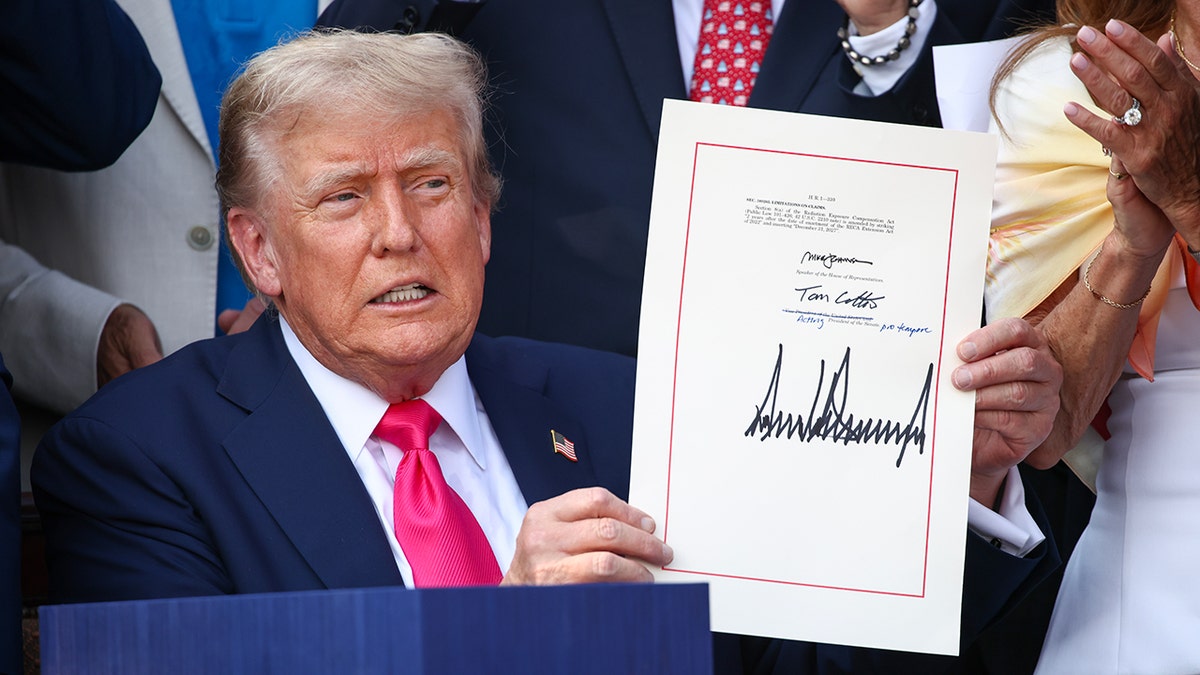
President Trump celebrates signing the ‘One Big Beautiful Bill’ into law on July 4, 2025 — a sweeping policy package Democrats claim guts rural health care services. (Samuel Corum/Getty Images)
The changes to Medicaid, as well as cuts to food stamps, another one of the nation’s major safety net programs, were drafted in part as an offset to pay for extending Trump’s tax cuts. The measure includes a slew of new rules and regulations, including work requirements for many of those seeking Medicaid coverage.
Democrats, for months, have repeatedly blasted Republicans over the social safety net changes. And they spotlighted a slew of national polls last month and this month that indicate the bill’s popularity in negative territory.
WHAT’S ACTUALLY IN TRUMP’S ‘BIG BEAUTIFUL BILL’
The DNC claims that the bill, which Trump signed into law on July 4 after the GOP-controlled House and Senate narrowly passed the measure along near-party-line votes, will gut Medicaid, forcing rural hospitals and nursing homes to close their doors.
«Rural hospitals were already on the brink of collapse thanks to Donald Trump, but now he has put the last nail in the coffin for rural hospitals with his billionaire budget bill,» DNC chair Ken Martin argued in a statement to Fox News.
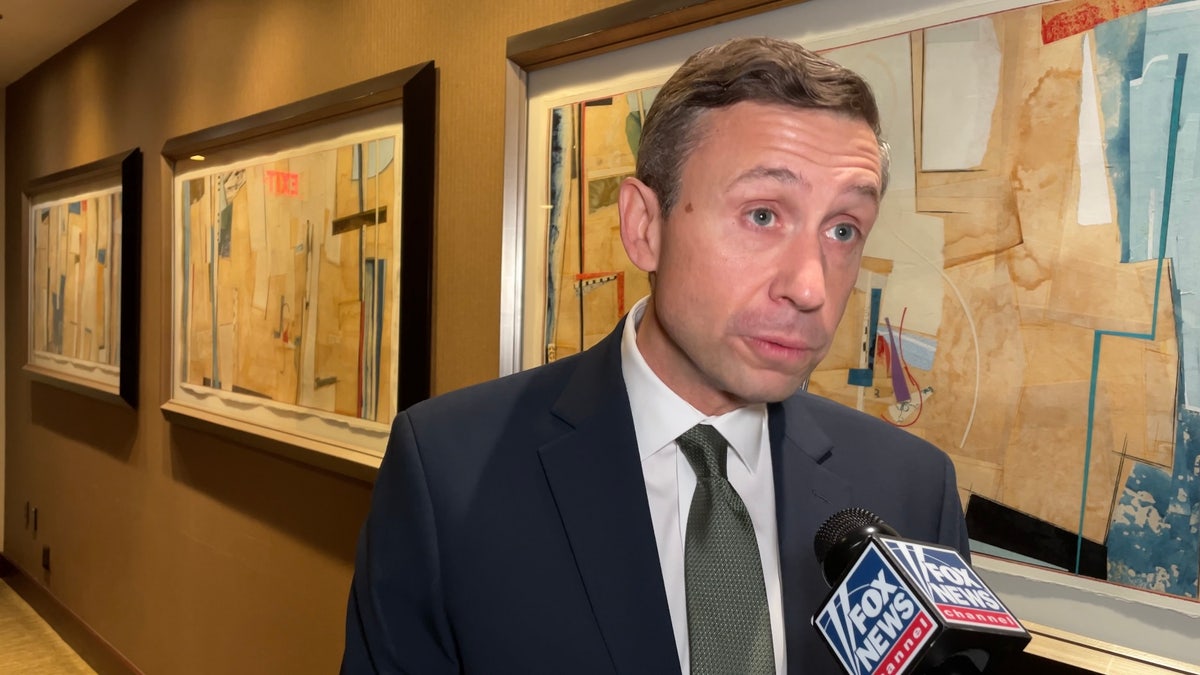
DNC Chair Ken Martin is leading the charge against Trump’s domestic policy package, accusing Republicans of abandoning rural Americans by slashing Medicaid funding. (Fox News – Paul Steinhauser)
Martin highlighted that «in states across the country, hospitals are either closing their doors or cutting critical services, and it’s Trump’s own voters who will suffer the most. This is what Donald Trump does — screw over the people who are counting on him.»
Republican National Committee (RNC) chair Michael Whatley, in an interview with Fox News Digital last week, spotlighted that «if you take a look at the Medicaid side of this conversation, the fact is that we’re going to be moving illegal aliens off of Medicaid. We’re going to be strengthening the program. Those are things that absolutely need to happen.»
FIRST ON FOX: HOUSE REPUBLICANS LAUNCH FIRST ADS TOUTING ‘BIG, BEAUTIFUL BILL’
And he argued that «the tax cuts are going to be very, very strong indicators, no tax on tips, no tax on overtime, no tax on Social Security. Plus we’re extending those Trump tax cuts. This is going to help every family in every community all across the country.»
Included in the megabill is a $60 billion fund, named the Rural Health Transformation Program, which Republicans say would offset cuts to Medicaid and would also help overcome long-standing health disparities that rural communities have faced.
CLICK HERE TO GET THE FOX NEWS APP
But the DNC says their new analysis «shows this funding was never going to be enough to make a difference.»
And the DNC points to a non-partisan breakdown of the new law, which says that half of the rural hospital funding will be split evenly among all states that apply, regardless of need.
Both parties see the «big, beautiful bill» as a key part of their messaging heading into next year’s midterm elections, when the Republicans will be defending their slim majorities in the House and Senate.
INTERNACIONAL
Essential workers left unpaid after Senate Democrats kill pay bill
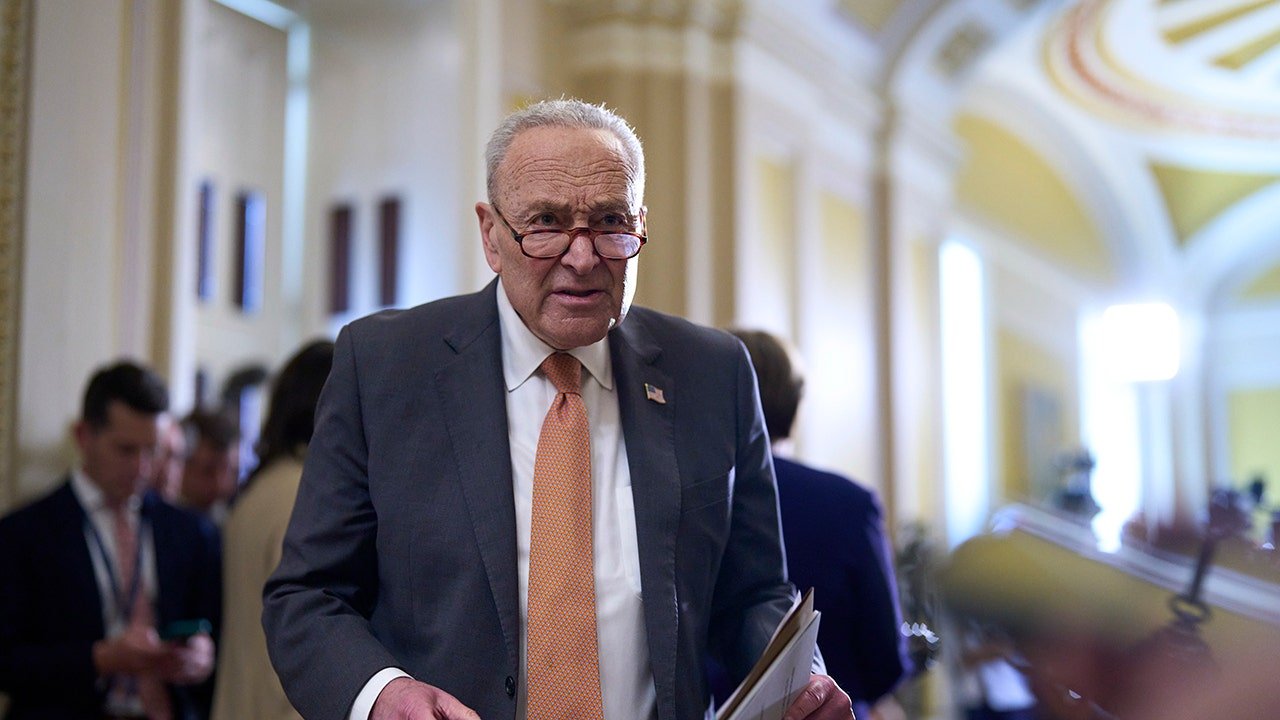
NEWYou can now listen to Fox News articles!
Democrats blocked a Republican-led attempt to provide essential government workers with paychecks amid an ongoing, 23-day shutdown, calling the bill overly selective and incomplete.
That bill, proposed by Sens. Ron Johnson, R-Wis., and Todd Young, R-Ind., failed in a 54-45 vote, where 60 votes were needed to advance the bill over the threat of a filibuster.
Only three Democrats, John Fetterman of Pennsylvania, and Raphael Warnock and Jon Ossoff of Georgia, voted with Republicans.
Senate Minority Leader Chuck Schumer, D-N.Y., turns to an aide during a news conference at the Capitol in Washington, June 3, 2025. (J. Scott Applewhite/AP)
In addition to compensating federal employees and military personnel during the current shutdown, the bill would also extend relief to future instances where funding bills aren’t in effect.
«For fiscal year 2026, and any fiscal year thereafter, there are appropriated such sums as are necessary to provide standard rates of pay, allowances, pay differentials, benefits, and other payments on a regular basis to excepted employees,» the bill reads.
SENATE STALLS ON SHUTDOWN VOTE AMID WARNING FURLOUGHED WORKERS MAY LOSE PAY
Johnson had pitched his bill as a long-term solution.
«I just hope, on a nonpartisan basis, we do something that makes sense around here for once,» Johnson said ahead of the bill’s consideration.
«With Democrats continuing the Schumer Shutdown, they should at least agree to pay all the federal employees that are forced to continue working. The 2025 Shutdown Fairness Act is a permanent fix that will ensure excepted workers and our troops are paid during a shutdown,» Johnson said.
Other Republicans blasted Democrats for voting against the bill.
«It means Democrats don’t care,» Sen. John Cornyn, R-Texas, said. «We know this is going to end sometime. The question is when. I guess it will depend on how much carnage the Democrats want to create. To me, they are in a box canyon, and they can’t figure out how to get out.»
Essential federal employees have been asked to continue working since the government entered a shutdown on Oct. 1 after lawmakers failed to pass spending legislation to begin the 2026 fiscal year. Republicans have advanced a short-term spending extension that would open the government through Nov. 21. Democrats have repeatedly rejected that proposal though, demanding that Congress first consider an extension to expiring COVID-19-era supplemental funding for Obamacare health insurance subsidies.
Republicans, who maintain that the health insurance subsidies are unrelated to the government’s short-term funding needs, have rejected those demands out of hand.
Democrats in the Senate have voted 12 times to defeat the stopgap bill.
JOHNSON WARNS US ‘BARRELING TOWARD ONE OF THE LONGEST SHUTDOWNS’ IN HISTORY
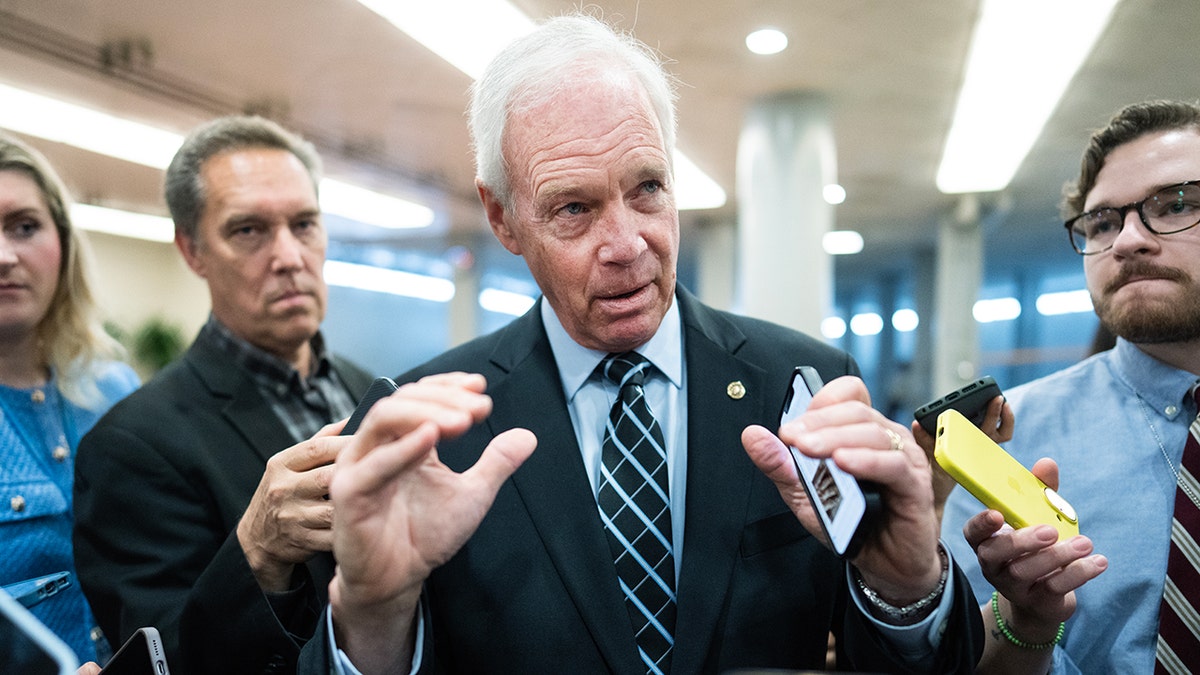
Sen. Ron Johnson talks with reporters in the U.S. Capitol after the House passed the One Big Beautiful Bill Act on May 22, 2025. (Tom Williams/Getty Images)
The shutdown looks poised to continue with no resolution in sight, prompting lawmakers to worry about key areas that are feeling the shutdown’s effects more acutely. The Johnson-Young supplemental package was the most recent attempt to provide a limited basis for relieving some of that pain.
Ahead of Thursday’s vote, Republicans in the House of Representatives appeared open to considering the Johnson-Young bill.
House Speaker Mike Johnson, R-La., told House Republicans during a lawmaker-only call on Tuesday that his chamber would be «prepared to act» if the bill passed the Senate, Fox News Digital was told. Johnson has repeatedly said he would give lawmakers 48 hours’ notice to return to Washington before any votes but has largely signaled he will keep the House out of session until Senate Democrats pass the GOP’s funding bill.
Johnson also said on the call that he was skeptical the bill would get enough Senate Democratic support to pass.
«If they oppose the Ron Johnson bill in the Senate, it will be absolutely clear that they are simply using the military and air traffic control and law enforcement and all these other personnel as pawns for their political efforts,» Johnson said, Fox News Digital was told.
But other lawmakers had hesitations about partially reopening the government, offering relief to some workers and not others. That was the concern of Sen. Richard Blumenthal, D-Conn., ahead of Thursday’s vote.
«I have a concern about picking and choosing among all the federal workers,» Blumenthal said.
«I’m fine to support it. I think we need to pay our military, but I want to define and limit it in a way that provides pay to essential workers who serve our public safety and our national defense,» Blumenthal said.
Blumenthal voted against the measure.
Democrats in the House of Representatives signaled similar lines of opposition to the idea behind the Johnson-Young bill.
HOUSE GOP BLOCKS DEMS’ MILITARY PAY BILL AS GOVERNMENT SHUTDOWN THREATENS CHECKS
«It’s not legislation that I support, because it appears to be more like a political ploy to pick and choose, giving Donald Trump discretion [over] which employees should be compensated, and which employees should not be compensated. All employees should be compensated and that will happen when we reopen the government,» House Minority Leader Hakeem Jeffries, D-N.Y., told reporters on Monday.
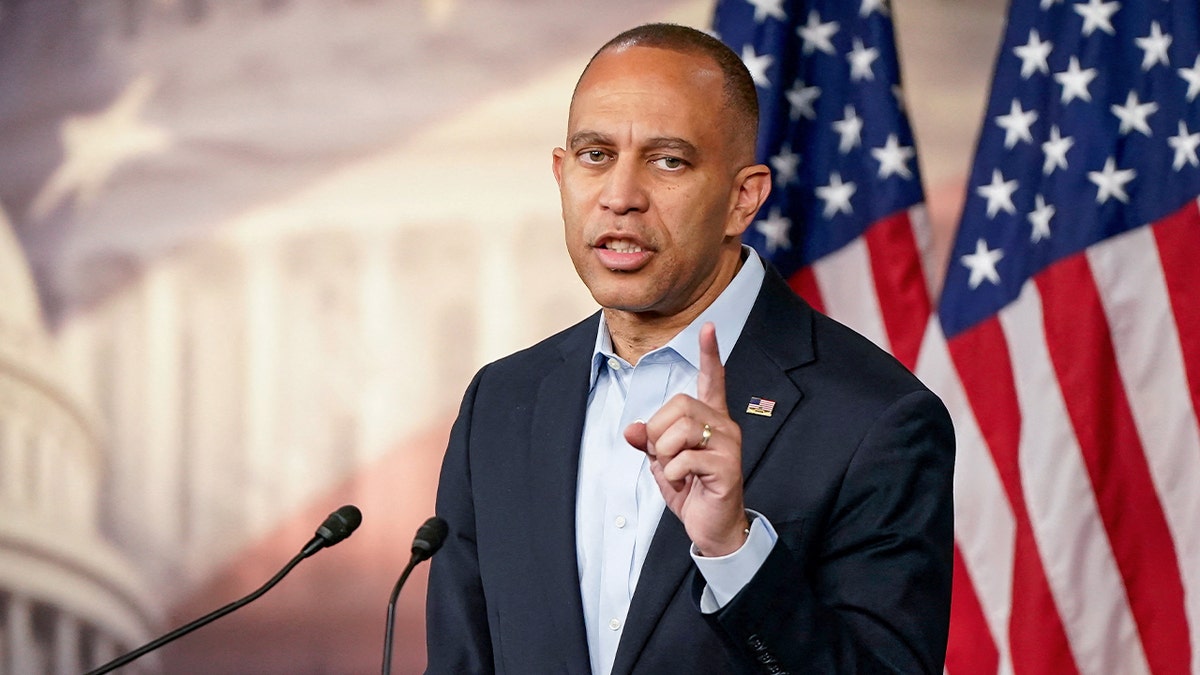
House Minority Leader Hakeem Jeffries, D-N.Y., holds a press conference on the 14th day of the government shutdown on Capitol Hill in Washington, Oct. 14, 2025. (Elizabeth Frantz/Reuters)
CLICK HERE TO GET THE FOX NEWS APP
Senate Democrats also defeated other pieces of legislation that would open portions of the government. Last week, Democrats in the Senate voted against a 2026 defense spending bill — one of the 12 year-long bills normally used to fund the government.
Aside from the Johnson-Young bill, the Senate will not consider other pieces of spending legislation on Thursday. Senators are scheduled to leave Washington, D.C., on Thursday and will return at the beginning of next week.
politics,senate,government shutdown,democrats senate
INTERNACIONAL
Trump vuelve a usar el indulto y perdona a Changpeng Zhao, fundador de criptomonedas Binance, quien admitió haber lavado de dinero

El presidente de Estados Unidos, Donald Trump, indultó al fundador de la plataforma de criptomonedas Binance, Changpeng Zhao, condenado por blanqueo de dinero, según informó este jueves en exclusiva The Wall Street Journal.
Este indulto llega después de esfuerzos por parte de Zhao para impulsar la empresa de criptomonedas de Trump.
Zhao fue condenado en mayo del pasado año a cuatro meses de cárcel tras un acuerdo con las autoridades para resolver acusaciones de blanqueo de dinero en la empresa. Salió de prisión el pasado mes de septiembre.
El exdirigente se declaró culpable de incumplir las normativas de EE.UU. contra el blanqueo de dinero, renunció al cargo de consejero delegado y asumió una multa de 50 millones de dólares como parte de un acuerdo con el Departamento de Justicia.
Binance ha pasado el último año buscando un indulto para el que fuera su fundador.
Según WSJ, el mandatario firmó el indulto el miércoles porque entiende que ha sido víctima de una persecución política, algo que alega con frecuencia cuando se trata de personas cercanas o afines a él, como el caso de Jair Bolsonaro condenado en Brasil por intento de golpe de Estado.
Desde que Trump volvió a la Casa Blanca, Binance ha sido un importante apoyo para la empresa de criptomonedas World Liberty Financial, fundada por la familia del presidente.
World Liberty Financial (WLFI) es una empresa y un proyecto de finanzas descentralizadas y criptomonedas, fundado en 2024. Su principal característica es la conexión pública y directa con el presidente Donald Trump y su familia.
El proyecto está diseñado para crear un ecosistema financiero digital que combina conceptos tradicionales con la tecnología blockchain, es decir sus datos o transacciones no pasan por un servidor bancario sino por una red de miles de computadoras.
World Liberty Financial ha generado una significativa controversia debido a su fuerte vínculo con la política estadounidense. El proyecto se ha asociado con Trump (mencionado como emeritus) y sus hijos, Eric Trump y Donald Trump Jr., entre otros.
Analistas y reguladores han señalado posibles conflictos de interés éticos y políticos, dada la participación de un presidente y su círculo íntimo en un proyecto financiero de esta escala y ambición.
Desde que regresó al poder en enero, Trump ha firmado varios indultos polémicos, como el de los responsables del asalto del Capitolio en 2021 o el de George Santos, excongresista republicano encarcelado por fraude y robo de identidad.
El caso de George Santos es el más reciente. Santos fue un congresista de Nueva York que fue expulsado de la Cámara de Representantes en diciembre de 2023 por numerosas acusaciones de engaño y fraude.
Trump sorprendió la semana pasada al anunciar que había conmutado la sentencia de George Santos, quien fue liberado inmediatamente después de poco más de tres meses de encarcelamiento.
Santos llegó al Congreso en 2022 de manera inesperada, ganando un escaño que lo convirtió rápidamente en una de las figuras más polémicas de Capitol Hill. Su carrera legislativa, sin embargo, fue breve y turbulenta. Todo comenzó a desmoronarse cuando medios de comunicación como The New York Times reportaron que gran parte de su currículum vitae era completamente inventado.
El presidente Trump también usó el indulto en sus últimos días en el cargo de su primera presidencia, a menudo en favor de aliados políticos o personas con fuertes conexiones.
Uno de eso casos es el de Roger Stone. Este asesor político de mucho tiempo fue condenado por mentir al Congreso e intimidar a un testigo en relación con la investigación sobre la injerencia rusa. Trump conmutó su sentencia de prisión y luego le otorgó un indulto completo.
Paul Manafort, es otro ejemplo: exjefe de campaña de Trump, fue condenado por fraude bancario y fiscal como parte de la investigación de Mueller por la injerencia rusa en la campaña de Trump.
Michael Flynn: Exasesor de seguridad nacional de Trump, que se declaró culpable de mentir al FBI. Trump le concedió un indulto completo.
Steve Bannon también es otro caso. El exestratega jefe de Trump, acusado de fraude relacionado con una campaña de recaudación de fondos para construir un muro fronterizo recibió el indultó en las últimas horas de la presidencia del republicano.
INTERNACIONAL
Qué podría pasar con las millonarias joyas robadas en el Museo del Louvre, según expertos en arte
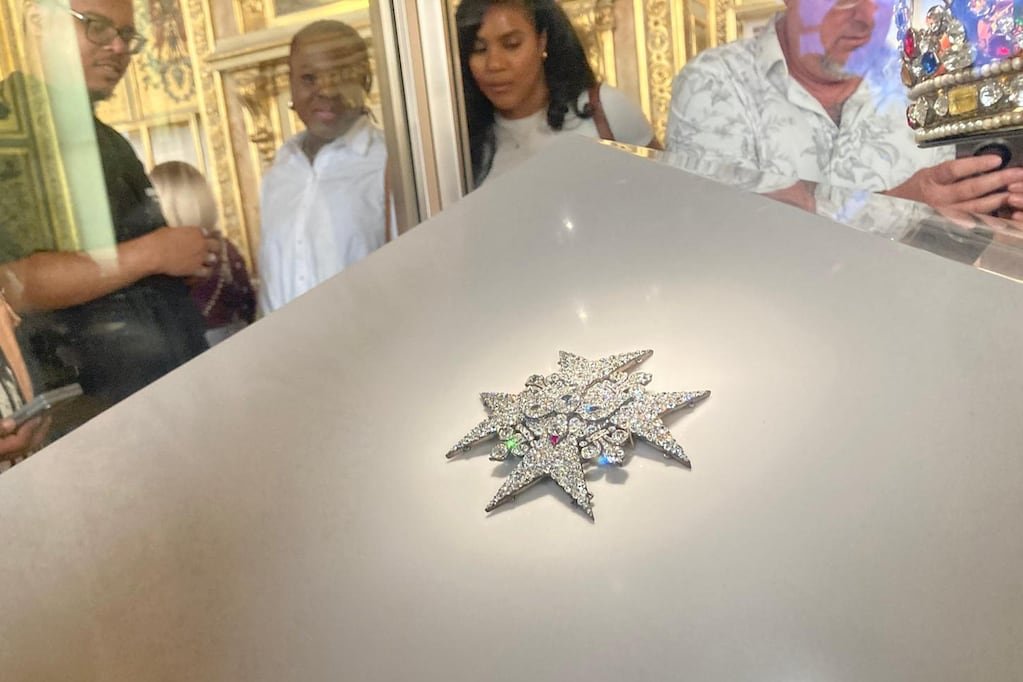
Días después del sorprendente robo en el Museo del Louvre en París, crece la especulación sobre dónde podrían terminar las lujosas joyas robadas que una vez adornaron a la realeza de Francia.
Un grupo de expertos advierte que las piezas valuados en más de 100 millones de dólares (88 millones de euros) podrían pronto ser fundidas o descompuestos en partes. Si se hace con éxito, algunos dicen que esas piezas más pequeñas podrían luego ponerse a la venta como parte de un nuevo collar, pendientes u otras joyas, sin llamar demasiado la atención.
Leé también: Nuevas imágenes del robo del Louvre: así escaparon los ladrones por un montacargas con el botín millonario
“Ni siquiera tienes que ponerlas en el mercado negro, solo las pones en una joyería”, afirmó Erin Thompson, profesora de delitos artísticos en el John Jay College of Criminal Justice en Nueva York. “Podrían venderse a la vuelta de la esquina del Louvre”.
Thompson y otros dicen que esto se ha vuelto cada vez más común con joyas y bienes metálicos robados y señalaron que es una forma en que los ladrones pueden intentar cubrir sus huellas y ganar dinero.
Visitantes en fila para entrar al museo del Louvre tres días después de que joyas históricas fueran robadas en un audaz robo a plena luz del día, el miércoles 22 de octubre de 2025 en París. (Foto AP/Thibault Camus)
Las joyas pueden ser difíciles de monetizar. “Al descomponerlas, ocultarán su robo”, señaló Marinello, y añadió que estos artículos podrían volverse aún más “imposibles de rastrear” si se sacan de Francia y pasan por cortadores y cadenas de suministro robustas en otros países.
Aun así, tales piezas a menudo se venden por una fracción del valor de lo que fue robado, debido a su tamaño más pequeño, pero también porque fundir o descomponer artículos de alto perfil elimina su valor histórico. No es un proceso sencillo. “El verdadero arte en un robo de arte no es el robo, es la venta”, sostuvo Robert Wittman, ex investigador principal del equipo de delitos artísticos del FBI.

Foto suministrada por Interpol el 23 de octubre del 2025, tomada de su website, que muestra las joyas robadas del Museo del Louvre en París. (Interpol via AP)
A diferencia de otros, Wittman duda que los ladrones lograrán monetizar con éxito los artefactos que robaron del Louvre, que incluyen un collar y pendientes de esmeraldas, dos coronas, dos broches, un collar de zafiros y un solo pendiente usado por la realeza del siglo XIX. Señala que las gemas aún pueden ser identificables por su claridad, por ejemplo, y el oro que fue refinado cuando las piezas se hicieron hace cientos de años no es tan puro como lo que parcialmente se demanda hoy.
Otros expertos dicen que las gemas más grandes pueden ser recortadas hasta el punto de ser irreconocibles. Un desafío es encontrar personas que tengan la habilidad para hacer eso y no hagan demasiadas preguntas, pero es posible. Visitantes hacen fila para entrar en el museo del Louvre tres días después del robo de joyas históricas a plena luz del día, el 22 de octubre de 2025 en París. (AP Foto/Thibault Camus)
Video: vestidos como operarios, así escaparon los ladrones
Luego de días de misterio sobre el millonario robo que vivió el museo más importante de Francia, un nuevo video revela más detalles sobre aquel día. En las imágenes puede verse a dos individuos descender del edificio por un elevador montado en un camión con llamativa tranquilidad, tras haber realizado un asalto de película.
El video, que fue ampliamente compartido en redes sociales, parece haber sido filmado desde el interior del Louvre, con vista al río Sena, el domingo, según publicó The Telegraph.
Leé también: Identificaron al verdugo nazi de una de las fotos más estremecedoras del Holocausto Nuevas imágenes difundidas en redes sociales revelan cómo la banda escapó del Louvre en pleno centro de París (Foto: captura de pantalla de video)
Tras cometer el robo, dos hombres —uno con un chaleco de neón y otro con un casco de motocicleta— descienden lentamente en el compartimiento del elevador, mientras un tercer cómplice los aguarda al final del recorrido.
En ese momento, comienza a sonar la alarma de emergencia del museo, mostrando el instante exacto en que se detectó la violación del sistema de seguridad.
Difundido en redes sociales, el video muestra segundos más tarde cómo los asaltantes escapan en scooters. “Los individuos están en scooters, están a punto de irse”, se escucha exclamar a una persona, mientras de fondo suenan las sirenas policiales.
El Museo del Louvre permaneció cerrado durante tres días tras el incidente y reabrió sus puertas al público esta semana. Las piezas, pertenecientes a la colección de las joyas de la corona francesa y valuadas en 100 millones de dólares, continúan desaparecidas.
Por el momento, no hay consecuencias para la banda de asaltantes profesionales que logró escapar en tiempo récord.
Robo histórico: detalles del escape
Según detalló The Telegraph, la banda de cuatro asaltantes entró y salió en apenas siete minutos, utilizando el elevador montado en un camión.
Nuevos datos revelan que el grupo estacionó un vehículo robado frente al museo y empleó un elevador de obra para acceder a una ventana del segundo piso, que cortaron con una amoladora antes de ingresar a la Galería Apollon.

Continúa la investigación por el robo al Museo del Louvre. (Foto: Reuters)
Una vez dentro, las cámaras registraron cómo cortaban una vitrina de vidrio mientras visitantes observaban la escena. Luego intentaron prender fuego al camión utilizado para el ingreso y, en la huida, dejaron caer una corona con esmeraldas y más de 1.300 diamantes, perteneciente a la emperatriz Eugenia.
Leé también: Reabrió el Museo del Louvre tras el millonario robo de joyas de la corona francesa
Los ladrones escaparon por la misma ruta utilizada para ingresar. Descendieron por el elevador montado en el camión y posteriormente huyeron en scooter. Hasta el momento, no hay detenidos.
Louvre, video, Escape, robo millonario

 DEPORTE1 día ago
DEPORTE1 día agoUniversidad de Chile vs. Lanús, por la Copa Sudamericana: día, horario y cómo verlo por TV

 CHIMENTOS1 día ago
CHIMENTOS1 día agoAdabel Guerrero confesó de qué famosa está enamorada y que le encantaría tener relaciones: «La China Suárez me sorprendió con su belleza»

 ECONOMIA2 días ago
ECONOMIA2 días agoScott Bessent oficializó el swap con la Argentina y afirmó: “No queremos otro Estado fallido en América Latina”















